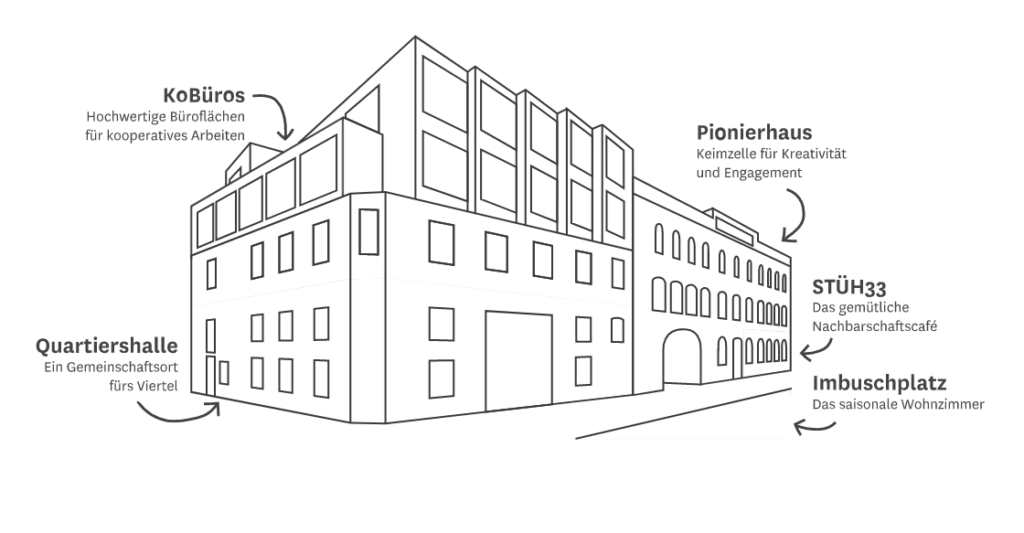Day 2 brought participants and tutors to meet the unique reality of the KoFabrik and its neighbourhood in the heart of Bochum. The KoFrabrik, short for Kooperative Fabrik is a former ironwork converted into a community-oriented place, where the neighbourhood, project makers and companies meet, exchange ideas and jointly shape their own living space and good coexistence. As an example of third places, participants had the opportunity to learn about the KoFabrik and its history thanks to the precious presentation from Lisa van Bonn, project officer for the NGO Montag Stiftung, who expounded the ways this place has been contributing to community life. In addition, participants toured the neighbourhood where they experienced other third places such as the public library, the church, the main square, the park and a meeting point café (STÜH33). It was a five-sense experience: listen, touch, talk to the locals to form first ideas about what constitutes a third place.
- The KoBüros offer plenty of space for new ideas and coworking spaces;
The Quartiershalle combines rentable space with space for the neighborhood that can be flexibly designed by the users and the people in the quarter - The Pionierhaus: with three co-working areas and a theater and event room, the pioneer house brings together freelancers and small companies
- The neighborhood café STÜH33 offers fresh coffee and a space that can also be used by the district
- The Imbuschplatz and STÜHMEYERSTRASSE is the green area that have been designed and used as a seasonal living room through projects initiated by the neighbors.
Rethinking spaces through the body
Once back in the common area of the KoFrabrik, groups touched base to reflect on what they experienced in these ‘third places’, their characteristics, materials, structures – which infrastructure should be provided? Possibility to drink? Benches? Walls? White boards? A degree of privacy? WiFi?
Much thought was given to the communities attending these venues and what are the factors that create boundaries or that are able to open the doors to everyone.
The morning session ended on the notes of the movement session led by Kerry Chappell, in which participants explored the spaces and connections around them through silent or guided body movements. As Kerry explained, the idea behind this practice is to invite learners to be able to take the risk of exploring the potential, limits and material conditions of third places through the body in order to generate open-ended responses, while working individually, collaboratively and communally to create abstract interactions which help to create redefine or transform third places and their role in society.
Surprisingly energising and creative!


All in all, it was a really active day – moving in and out of spaces, in and out of human-centred perspectives, in and out of our own limits.
See you tomorrow for day 3!


